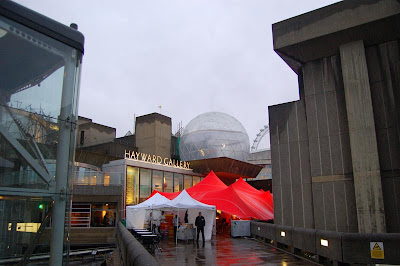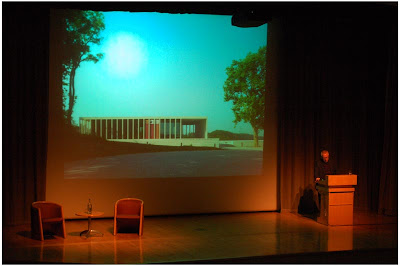
I recently went for a very interesting talk by a panel of speakers at the Queen Elizabeth Hall about the awesome Hayward Gallery (which is part of the South Bank Centre).
The talk was introduced and moderated by Ricky Burdett (Architect/ Professor at LSE) – he spoke about the making of the

He was followed by Dennis Crompton one of the architects who were part of the London County Council’s architecture team that designed this building. (Dennis along with a few of his colleagues from the project went on to form one of the most influential architectural groups of the 60s – Archigram). Dennis showed their initial ideas and process of its design. Though he was very glad to see the building celebrating its 40th anniversary with much fanfare he reminded us of a time when the building was much neglected and hated by many Londoners. It’s always great to hear an architect talking about an early work that has gradually grown to be liked by most and in his words – “…the more people become familiar with the
 (The building with all its additions for the on going Psycho buildings exhibition looks exactly like it was portrayed in one of the early collages made by Archigram)
(The building with all its additions for the on going Psycho buildings exhibition looks exactly like it was portrayed in one of the early collages made by Archigram)
Next came one of the most important contemporary artist on the
The last speaker of the day was - AliceRawsthorn - the ex-director of the
 ( Like Gormley said : "This building was not build - its cast", I love that you can see the patterns of the wood on the concrete, imprints from the planks used to cast this building)
( Like Gormley said : "This building was not build - its cast", I love that you can see the patterns of the wood on the concrete, imprints from the planks used to cast this building)
All in all the talk was a great way to better understand a really great building. A couple of days after the talk I went to the ongoing exhibition titled “Pschyo buildings” And though I really enjoyed many of the installations put up in and on the building none of them could even try to steal the show from the Hayward.


